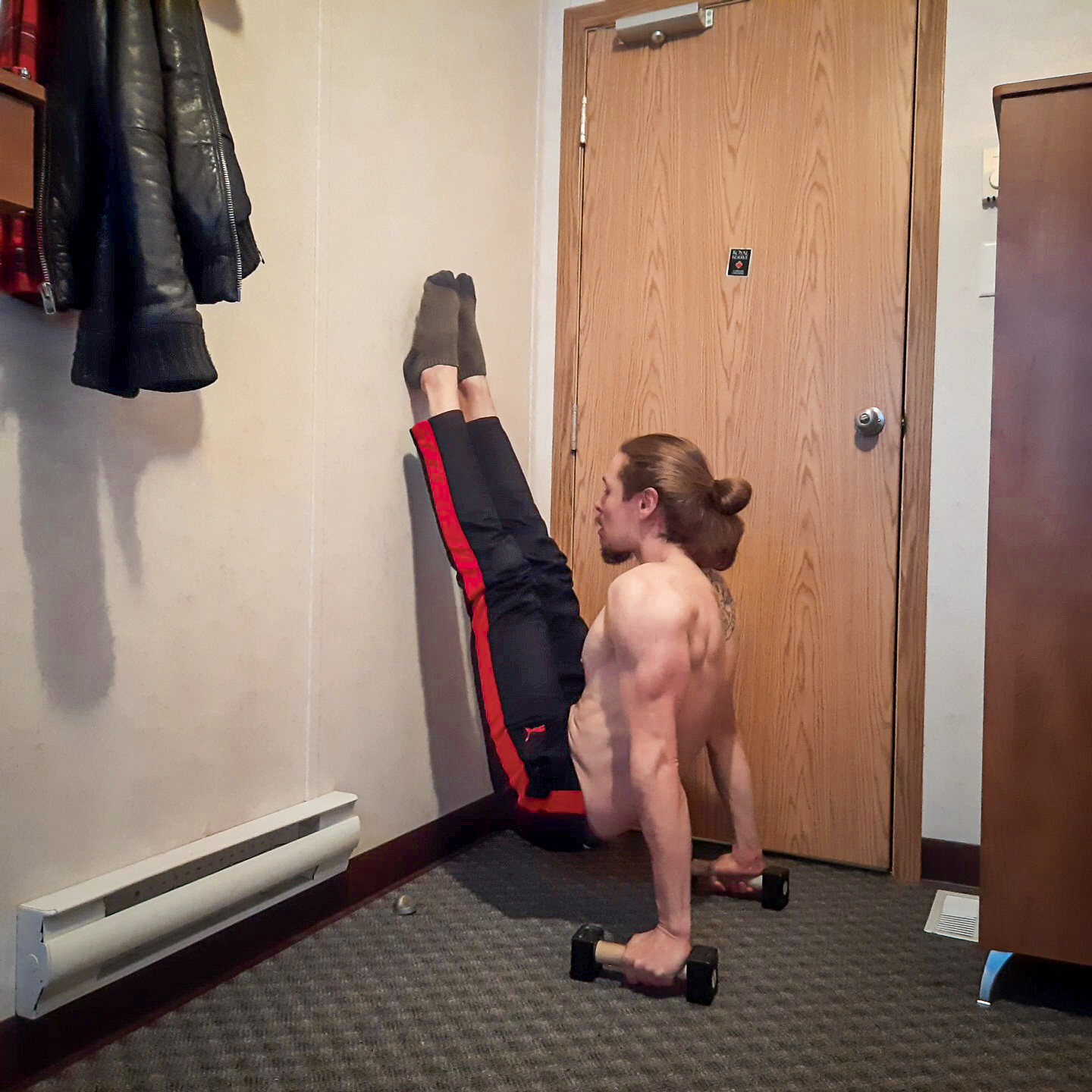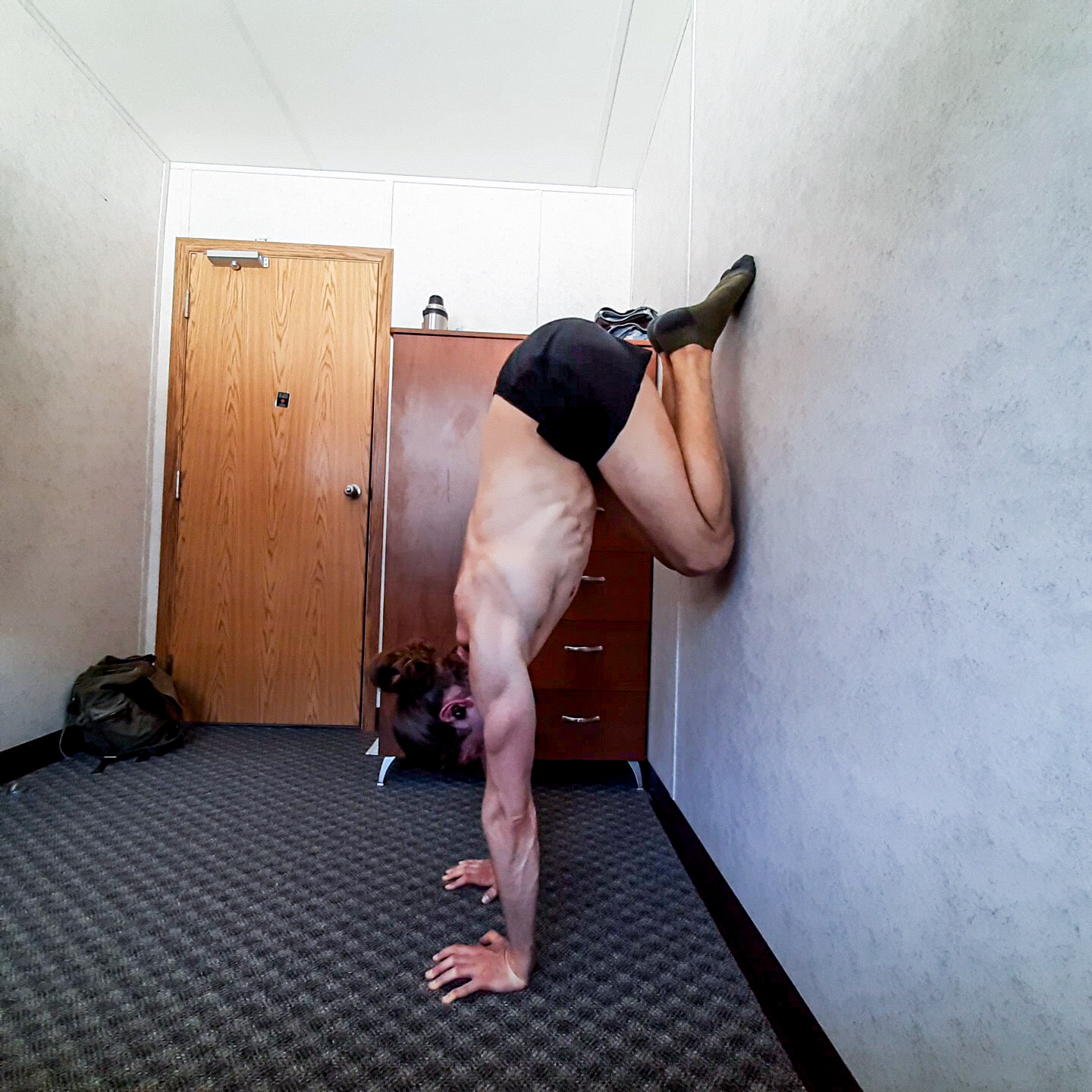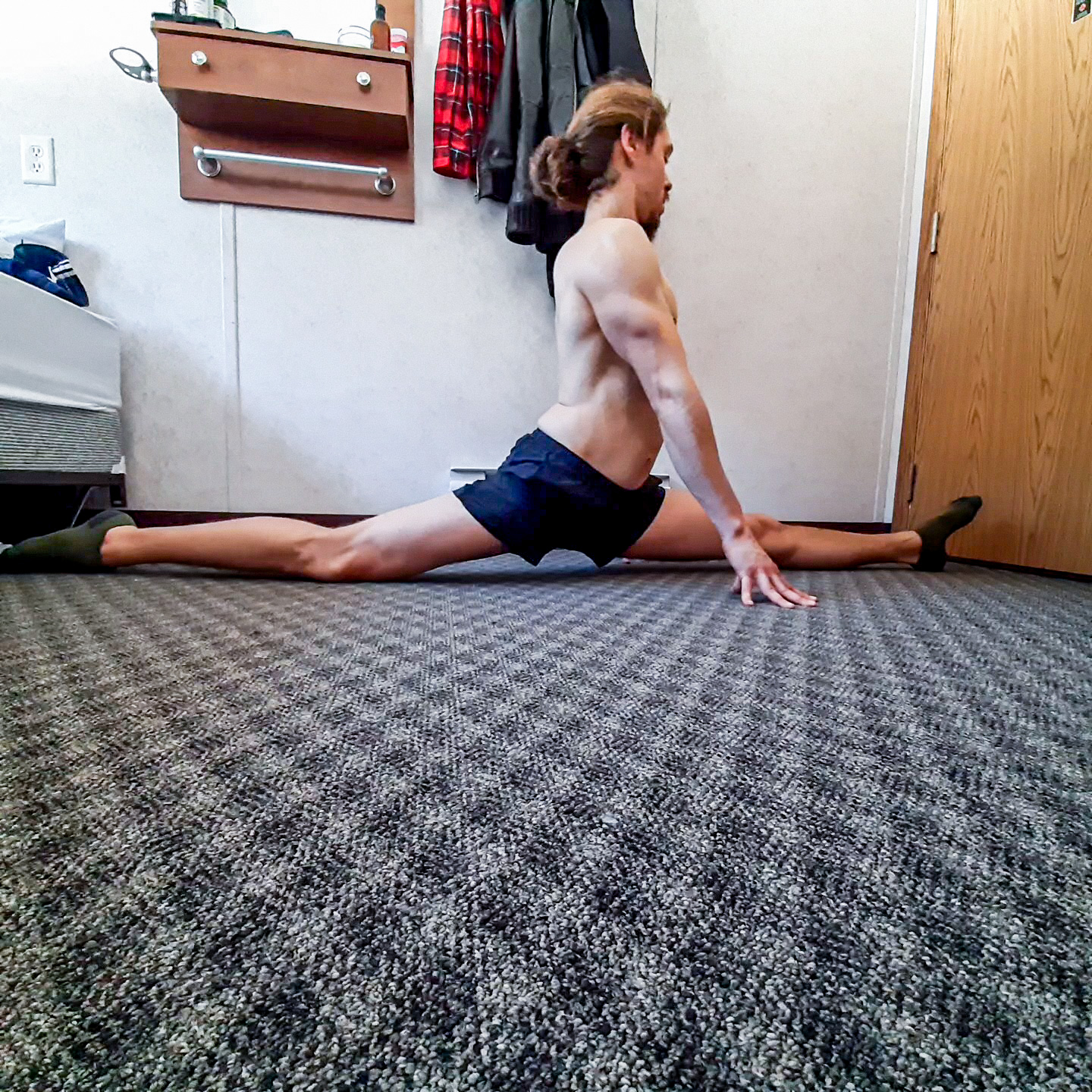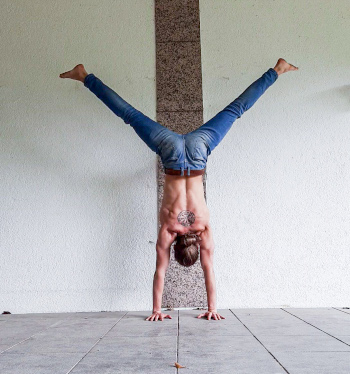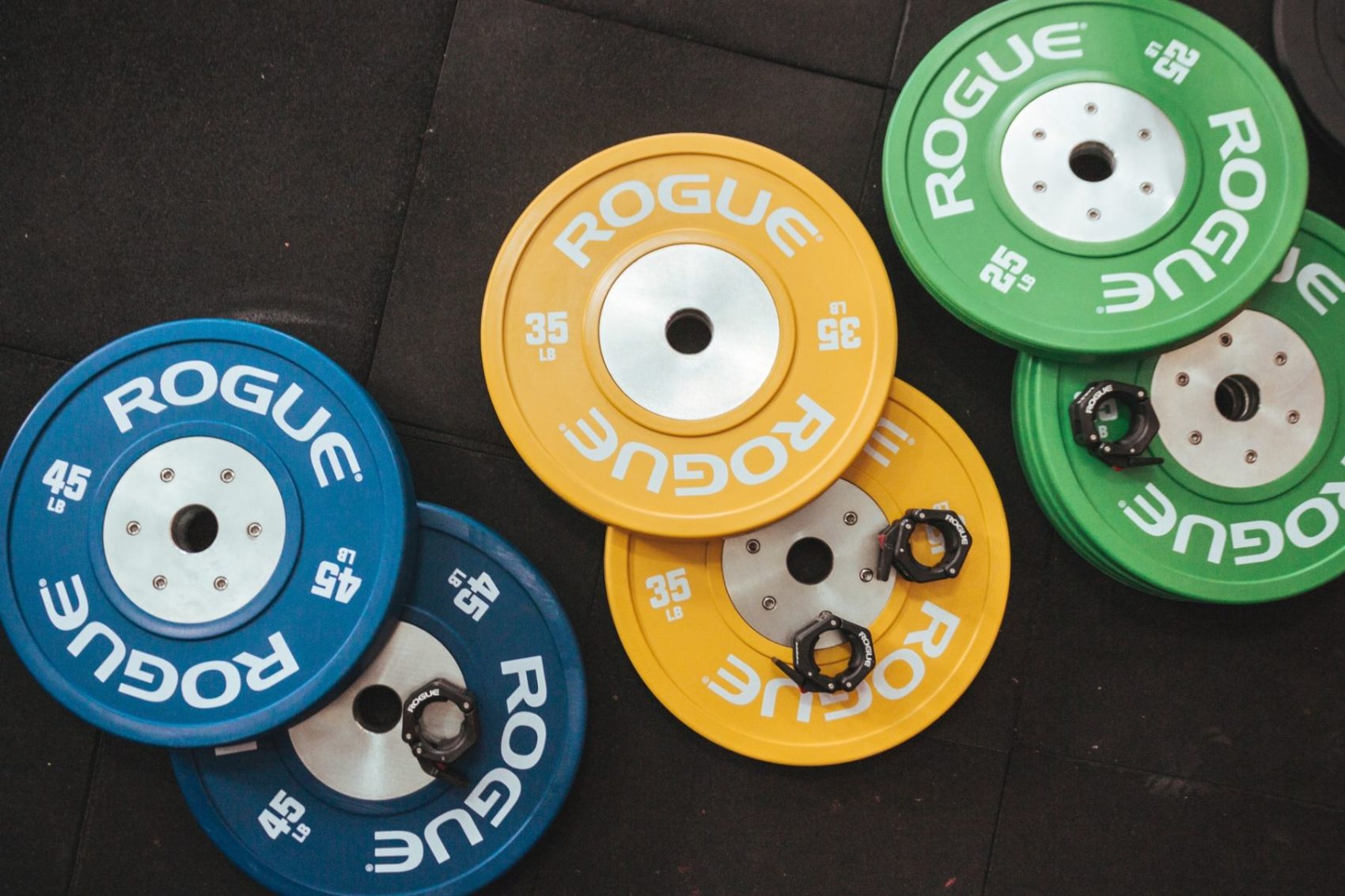Learning Skills are what we are all after in calisthenics, isn’t it?
For us calisthenics athletes it may be skills like a pullup, a front lever, a handstand, or muscle ups, we wanna learn. Powerlifters want to know how to snatch, deadlift, and squat. Even if you are playing soccer you are trying to acquire specific skills.
As you can see many sports are strongly focussed on skills.
But what exactly is a skill?
About this question, we are going to talk today. Sounds interesting? It is! Especially, because learning skills is highly individual and which to learn depends strongly on one’s goals.
First, we’re going to look at what a skill is and why a skill for you might not be one for another person. After that, we’re going to get more practical and see how this framework of skills can help our practice.
I would say, let’s start! Should we?
What is considered a skill in calisthenics?
The rough framework
A skill is a move that has a high technical demand.
All the calisthenics skills have a strength and mobility component, but most of the struggle will be about learning the movement.
Think about a handstand, a forward roll, or a kick.
For most people the struggle won’t be about getting stronger, getting more mobile, or conquering fear to perform that movement, but on putting in the work to teach your body the nuances of that move.
To further outline that – think about that:
What is strength work?
I would say strength work are exercises you can perform quite easy. These might be scaled-down versions of the skill you are trying to learn.
Just think of the free handstand pushup and inverted presses for example, or muscle-ups and dips/pullups.
The technical demand isn’t that high, the struggle here is more about kicking your *** and getting the reps in.
Everything clear until now? Because now it gets abstract!
A Skill for you might not be a Skill for me
And of course vice versa.
As previously said, skills depend on many factors like strength, mobility, coordination, and so on. If you lack the baseline of traits the skill I am working on at the moment requires, it might be not in your grasp.
To clarify that, let’s get back to our handstand example:
- Let’s say you start out and this is the first contact point for you with calisthenics.
- The chances are high that you lack this baseline of traits to work comfortably on handstands. Because each rep is a maximum strength, high-fear attempt you will have a hard time focusing on the subtly technical requirements that skill has.
Ok, let’s say you have some tumbling experience:
- The same goes for me if you would have me trying a backflip right now on the spot. Chances are high that I would smash my face into the floor badly because I never worked on such moves before. I am quite fearful of this move and my jumps suck.
- For you, on the other hand, a backflip might be a piece of cake that you perform in your regular warmup prior to the more advanced tumbling skills.
As you see what a skill truly is, strongly depends on the individual – your traits, your experiences, and where you stand at the moment.
It differs from one individual to one another.

How can this Concept help me learning Skills?
Structure your Workouts
Reading all this theoretical nonsense has to be worth something, isn’t it?
Luckily, it is. The first one is that the framework of skills can help you structure your calisthenics workouts.
As skills need you to be mentally, as well as bodily, fresh you should perform them prior to your strength or conditioning work each day and session.1
The hierarchy looks as follows:
Skills (Coordination & Power) – Conditioning (Strength) – Strength-Endurance – Endurance
This hierarchy strongly depends on how your body works and which activities tax your nervous system the most.
Be fresh when working the difficult Stuff
You don’t want to work on taxing moves being completely fatigued – chances are high your training will be unproductive or you even injure yourself.
There are several ways you can to that:
- Split your workouts:
You can do 20-30 minutes of skill work before doing strength/mobility/strength-endurance after that. - Split it intraday:
You can do your skill work early in the morning and strength/mobility/strength-endurance/endurance work later that day - Split it onto several days:
You can work one day on skills, one day on strength, and take the next off.
What fits you, strongly depends on your experience, lifestyle, and goals. But I think most will like the workout-splitting approach the most.

Let’s take the Front Lever as an Example
To avoid your head splattering all over the place by me solely talking about theoretical stuff, let’s take the front lever as an example:
- The front lever is an advanced pulling skill that can take a few months to a few years to master depending on your starting point.
- Before even attempting front lever specific skill work a solid strength foundation is very important – the stronger you are the shorter your actual journey will likely be.
Otherwise, each front lever attempt – even a fairly easy progression – will be a max-effort attempt.
And that’s what you wanna avoid.
Remember? We said skill work incorporates strength and mobility, but it shouldn’t be the hardest part.
The more you have to focus on pulling yourself up, while not dying, the fewer you can look after the right technique.2
Think of it like that:
- If strength3 is the main issue it will fog your thinking.
Unfortunately, you need a clear head to focus on the most important cues. And the harder the attempt is, the fewer cues you can actually look after. - If you are fairly strong and well-prepared training will be taxing, too. Don’t get me wrong here. But it will be taxing on a different level.
It is more about evening out your technique while building specific strength in the actual front lever shape.
This brutal straight arm pulling strength and core strength won’t build up by you doing solely ab workouts and pullups.
Instead, these to go hand in hand, general strength, and specific work – for any skill you wanna learn.
Let’s say you’ve build up a solid strength foundation and are prepared to embrace your journey towards a front lever:
- You follow a traditional push/pull/legs schedule and train pull two times a week.
- Now you should work on appropriate front lever progressions prior to your strength work for 10-20 minutes or somewhat like 5-8 sets.
- Afterward, you can train your pulling strength and should incorporate one to two focussed straight arm pulling exercises.
Great ones could be front lever raises or straight arm pulldowns. - These two exercises should supplement your skill work – either by getting you stronger in that position or by evening out weaknesses.
- The others should be general strength exercises like rows, chinups, curls or facepulls.
Stay focussed when learning Calisthenics Skills
As previously mentioned, I would spend 10-20 minutes, or somewhat like 5-8 sets to learn 1-2 different skills. The actual skills depend on your goals and following workouts.
It makes sense to learn pushing skills prior to your pushing focussed workouts and vice versa.
Afterward, I would choose 1-2 specific exercises for the skill you wanna learn, as well as, 3-4 general strength and prehab exercises.
A sample front lever skill workout could look the following:
- Skill:
Open Tuck Front Lever Holds 5-8 sets of 10-20s - Weighted Chinups 5x5r
- Tuck Front Lever Raises 3x5r
- Rows 3x20r
- Pelican Curls 3x3r slow negative reps
- Facepulls 3x12r
As you see, no fancy magic involved, just simple and logical programming. I found the hardest part to be conquering yourself and cutting out the noise.
Acquiring a skill takes a lot of time, working neatly focussed on it. While doing so other skills sing like sirens, trying you to get off your path.
There are a lot of cool other pulling skills – why not train a back lever, one arm chinup or such things, too?
The only problem with that bouncing is that you won’t get anywhere near to them soon. Trust me, tried that, failed horribly. The most valuable skill is dedicating your time to something and cutting out the noise.
There will be times your motivation goes overboard and the front lever training will be draining as hell.
That’s one main issue many have with dedicated skill practice. One thing I found useful is to spice up the workouts from cycle to cycle*, keeping the focus or the oldscool method of simply pushing through it. For training to be successful not every day can be fun. If one is, enjoy and praise the workout gods – if not put in the work regardless of it.
That said, stay on your path towards skill-glory. Cut out the noise that surrounds you. And get what you ‘re after!
If you need some help, you know where to find me. One thing I would like to know is which skills you are currently working on?
Have some productive skill sessions mate,

Sources and further reading:
- I learned much about the mindset towards dedicated skill work – by dedicated skill work – by failing and readdressing why I felt doing so. By trying to learn different skills. Most of these insights cam from my recent, most of the time frustrating, handstand journey.
Going into each session without expectations and seeing it as moving meditation, helped me to cope with the high, often-unreasonably fluctuations in what you are able to do that day.4Often when I worked on handstands totally trashed, after a horrible nightshift, no motivation at all, and tons of coffees pre-workout, I had the greatest sessions ever.
The badest sessions were me going into the session outdoors, on a sunny and free day, being in a great mood, and really motivated to go upside down, with 9 hours of sleep previously. The ways of the handstand gods are miraculous… - Funnily, I learned a lot about the different energy systems and aspects of how to structure your workouts from the climbing-specific book How to Climb* by Eric Hörst. It is an awesome book for anybody seriously into climbing.
- I found the YouTuber Gabo Saturno to have some useful videos on how to learn skills, how to program skills, and what skills are. Check him out he is a really humble guy!
- Check out the awesome spreadsheet of the most common calisthenics skills there are and all of their progressions. I stumbled upon this beauty randomly in the vast landscape of the WWW.
Footnotes
- There are cases when practicing skills after strength work might be useful, too, but these are very rare. For example, when you want to train your ability to perform skills even when fatigued. Russian superhuman gymnasts like to train that way.
- Maximum attempts are OK, too. But they shouldn’t take up most of your work – more like 10% of it. Calisthenics skills like a front lever, a handstand or an L-Sit are highly specific and each of them needs you to focus on different points to get efficient.
You only learn these points by getting the technique down. - or mobility, or any other trait, expect control

